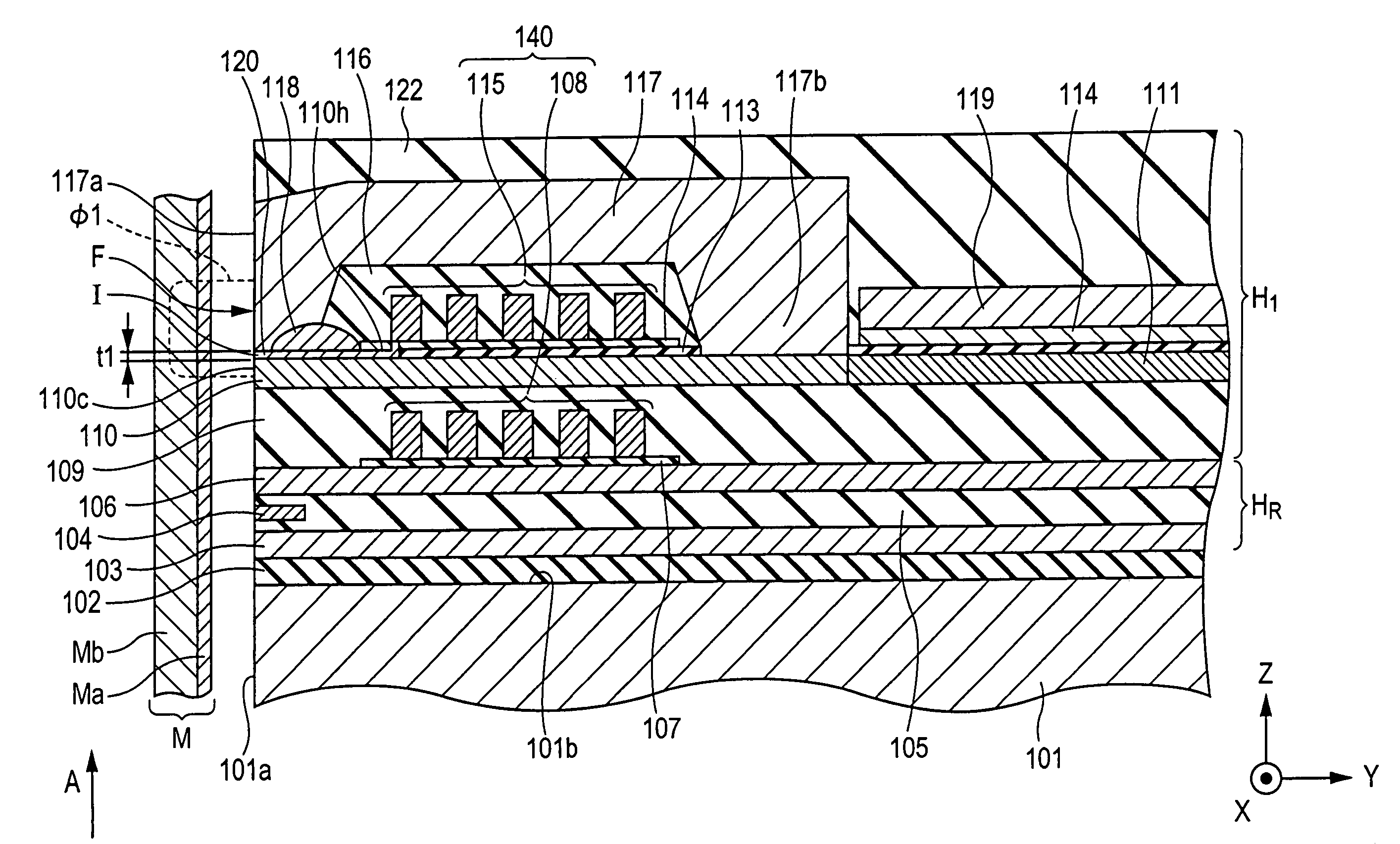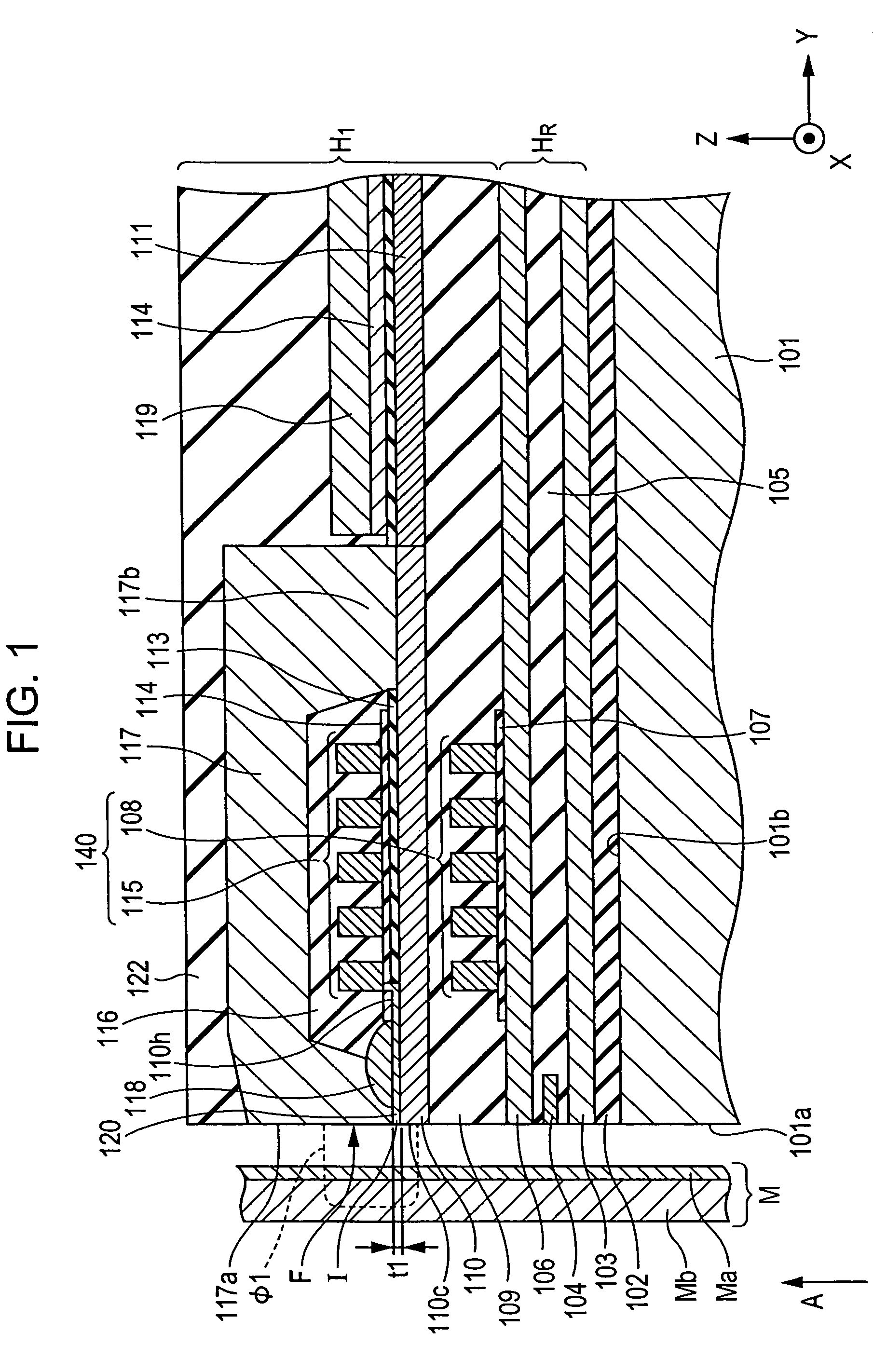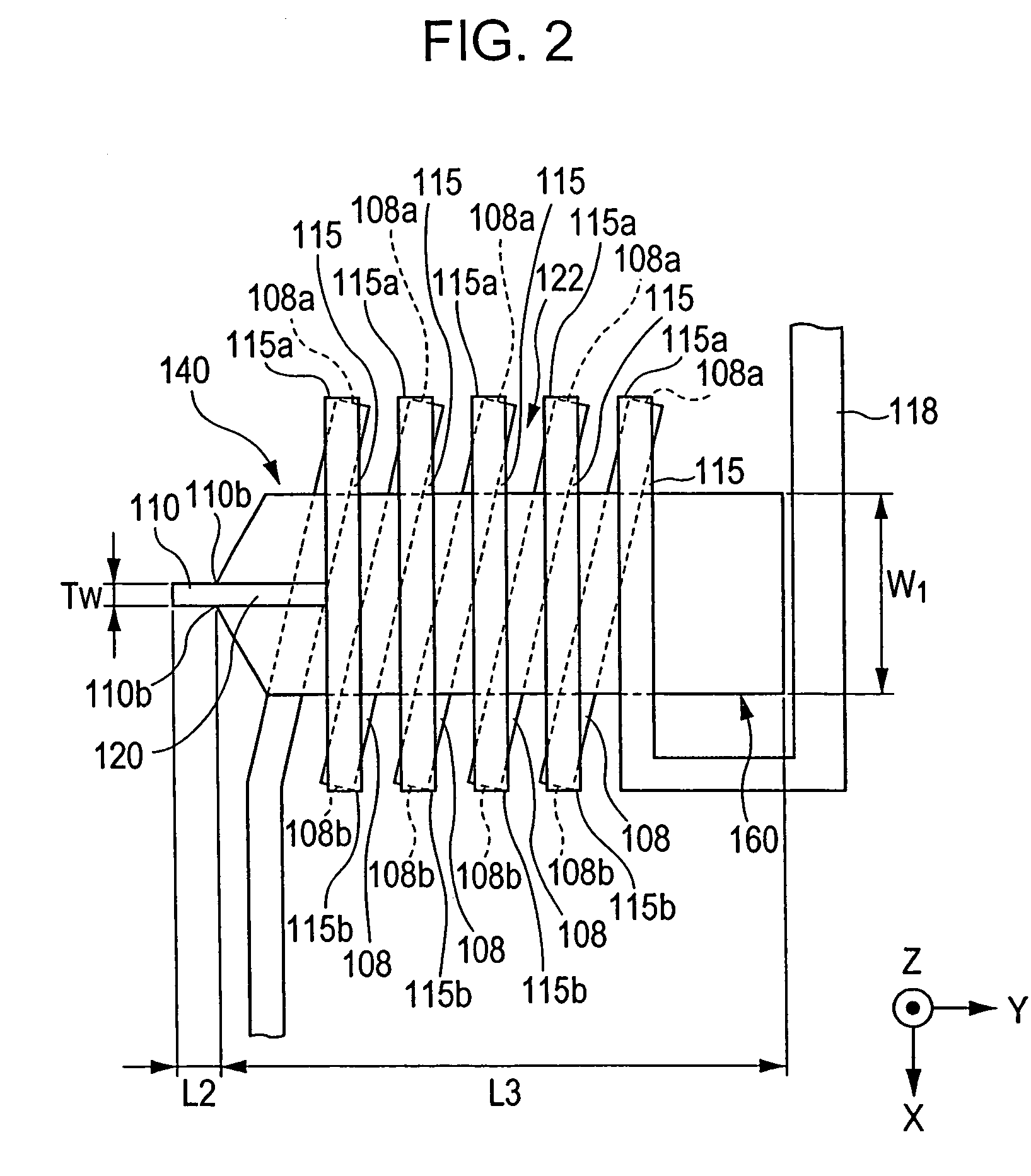Magnetic recording head having a switching layer which may be rendered non-magnetic by heating
a switching layer and recording head technology, applied in the field of magnetic recording heads, can solve the problems of difficult to reduce the size and manufacturing cost of the apparatus, serious phenomena, and complication of the apparatus
- Summary
- Abstract
- Description
- Claims
- Application Information
AI Technical Summary
Benefits of technology
Problems solved by technology
Method used
Image
Examples
first embodiment
[0049]FIG. 1 is a vertical sectional view of a magnetic head according to the present invention. The magnetic head is represented by reference numeral H1 in FIG. 1 and is a type of perpendicular recording magnetic head for applying a magnetic field perpendicular to a recording medium M to perpendicularly magnetize a hard layer Ma included in the recording medium M. The magnetic head H1 has an opposed face H1a opposed to the recording medium M.
[0050]The recording medium M has, for example, a disc shape, further includes a soft layer Mb, and rotates on its center axis. The hard layer Ma is located close to the magnetic head H1 and has high coercive force. The soft layer Mb is located far from the magnetic head H1 and has high magnetic permeability.
[0051]A slider 101 is made of a non-magnetic material such as Al2O3—TiC and has an opposed end face 101a opposed to the recording medium M. The rotation of the recording medium M creates an air flow, which separates the recording medium M fr...
second embodiment
[0076]In the magnetic head H1, the switching layer 120 is connected to the first coil layers 115 and heated by heat generated from the first coil layers 115. However, the switching layer 120 need not be necessarily connected to the first coil layers 115 directly and a portion of the switching layer 120 may be located close to the first coil layers 115 such that Joule heat generated from the first coil layers 115 is conducted to the switching layer 120. FIG. 5 shows a magnetic head according to the present invention. This magnetic head has a face opposed to a recording medium and includes a switching layer 120 extending from the opposed face in a height direction (the Y direction in FIG. 5), an insulating layer 114, and first coil layers 115, these layers being arranged in that order. Joule heat generated from these first coil layers 115 can be conducted to this switching layer 120 during recording by adjusting the thickness of this insulating layer 114. Therefore, this switching lay...
third embodiment
[0077]FIG. 6 shows a magnetic head according to the present invention. This magnetic head has a face opposed to a recording medium and includes first coil layers 115, a switching layer 120, an insulating layer 113 (see FIG. 7), and a heater layer 123 which is spaced from these first coil layers 115 and which is located close to this switching layer 120. FIG. 7 is an enlarged fragmentary sectional view showing the periphery of the opposed face of this magnetic head. With reference to FIG. 7, this switching layer 120, this insulating layer 113, and this heater layer 123 are arranged in the Y direction in that order. This heater layer 123 is made of a conductive material such as Cu, Ni—Cu, Ni—Cr, Ta, or W. During recording with the magnetic head, a current is supplied to this heater layer 123 simultaneously with the supply of a current to these first coil layers 115. This allows this switching layer 120 to be heated to a temperature higher than its Curie temperature, whereby this switc...
PUM
| Property | Measurement | Unit |
|---|---|---|
| Curie temperature | aaaaa | aaaaa |
| temperature | aaaaa | aaaaa |
| thickness | aaaaa | aaaaa |
Abstract
Description
Claims
Application Information
 Login to View More
Login to View More - R&D
- Intellectual Property
- Life Sciences
- Materials
- Tech Scout
- Unparalleled Data Quality
- Higher Quality Content
- 60% Fewer Hallucinations
Browse by: Latest US Patents, China's latest patents, Technical Efficacy Thesaurus, Application Domain, Technology Topic, Popular Technical Reports.
© 2025 PatSnap. All rights reserved.Legal|Privacy policy|Modern Slavery Act Transparency Statement|Sitemap|About US| Contact US: help@patsnap.com



